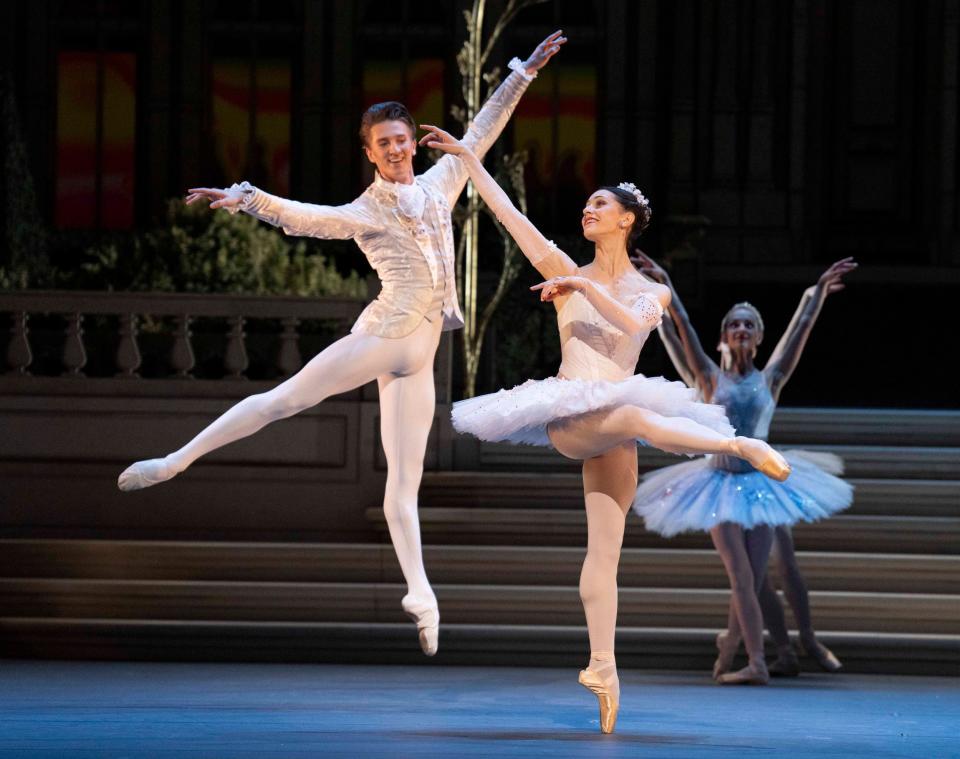The Royal Ballet’s Cinderella: an enchanting, exasperating night on the tiles

Frederick Ashton’s Cinderella (1948) was the first full-evening ballet ever to come out of Britain, and as such has always had a special place in the Royal Ballet’s history. The company’s last production, however, was an ugly beast, deservedly “retired” back in 2011 – but in these situations there is (as the company’s current Swan Lake attests) no guarantee that the replacement will be a step up. As an audience member, you can all too easily find yourself out of what, in hindsight, was a relatively well-appointed frying-pan and face-down in an even less rewarding fire.
Well, the company’s new Cinderella is, at least, a definite improvement on its predecessor. A curmudgeon might argue that Tom Pye’s elaborate, you-can-see-where-the-money-went sets are more Matthew Bourne/Lez Brotherston than Covent Garden. And Alexandra Byrne’s costumes are, let’s say, decidedly variable. But, expertly lit by David Finn (who also did BRB’s visually resplendent David Bintley/John Macfarlane production, in 2010) and combined with Finn Ross’s elaborate projections and the odd conjuring flourish from illusionist Chris Fisher, the visuals undoubtedly deliver something that was sorely lacking from the staging’s predecessor: magic.
That is certainly for the good. And nor, by the way, was there any shortage of sorcery coming from the pit on Monday's big first night, with the house orchestra under Koen Kessels letting both the magnificent lushness and spiky energy of Prokofiev’s score ring out.
But was there the same degree of enchantment coming from the performances? That, sadly, is more debatable. Of the four crucial Act I fairies – each of their solos a little grenade of choreographic inventiveness – only the terrific Anna Rose O’Sullivan, as “Spring”, seemed genuinely determined to make hers fly, but even she, like almost everyone on stage, fell short on Ashtonian upper-body pliancy and physical, épaulment-driven “presentation”. (Overall, this quartet reminded me of the comparable and similarly disappointing quintet of fairies in the Royal Ballet’s Sleeping Beauty back in January.)
Better were Fumi Kaneko’s serene maîtresse d’ of a Fairy Godmother and (in another debut) Taisuke Nakao’s kinetic Jester. Returning as the more strident of the conspicuously old-school men-in-drag Step-Sisters, Gary Avis was an absolute hoot in a way that – as so often with a ballet that has always been a precarious balance of tragedy, romance and knockabout comedy – threatened to topple the whole thing. Luca Acri, as the more browbeaten of the two, was more anonymous, wringing less comedy and little pathos from the role.

As the Prince, Vadim Muntagirov gave what, by even his standards, was a heady display of classical virtuosity – not much grit in this wife-seeking royal’s oyster, but an undeniably beautiful debut for all that. However, it was tricky to warm much to Marianela Nuñez’s Cinderella. I couldn’t detect much wretchedness or sense of genuine yearning from her punctilious but steely footwork in Act I, and her (undoubtedly impressive) stage-crossing fouettés in the Act II pas de deux felt more show-offy than an expression of ecstatic, once-in-a-lifetime romantic bliss.
It was also Nuñez who was given the “final” opening night back in April 2011 – not much sense there of a company in forward-motion, downright perversely so when the world’s straight-sets greatest active Ashtonian, Francesca Hayward, is now on board. Still, she tackles the role this Thursday, along with the always-interesting Alexander Campbell. I welcome this often dazzling new production; with luck, these two can help do the ballet’s genius of a creator full justice.
In rep until May 3. Tickets: 020 7304 4000; roh.org.uk


